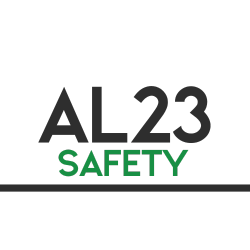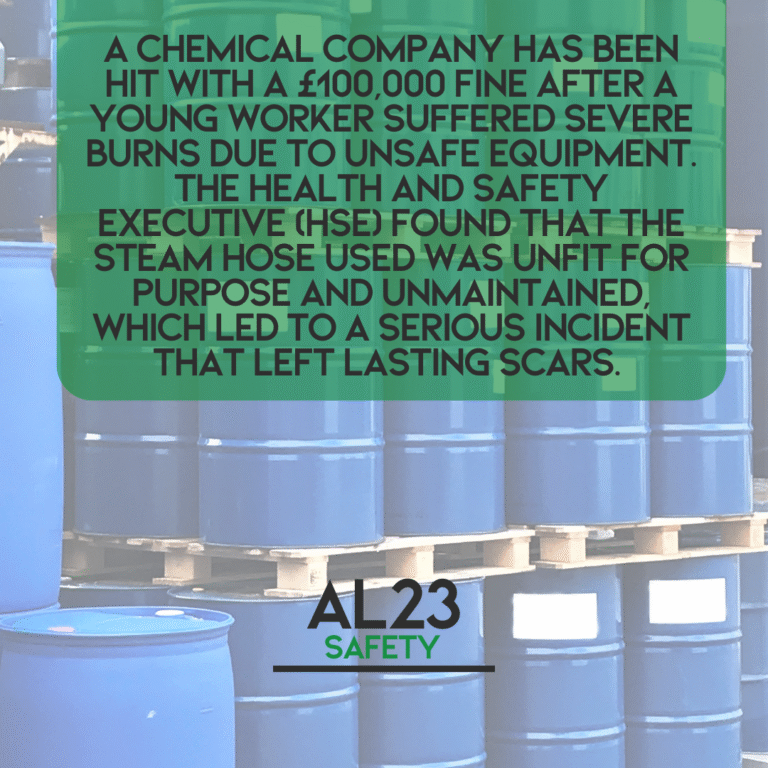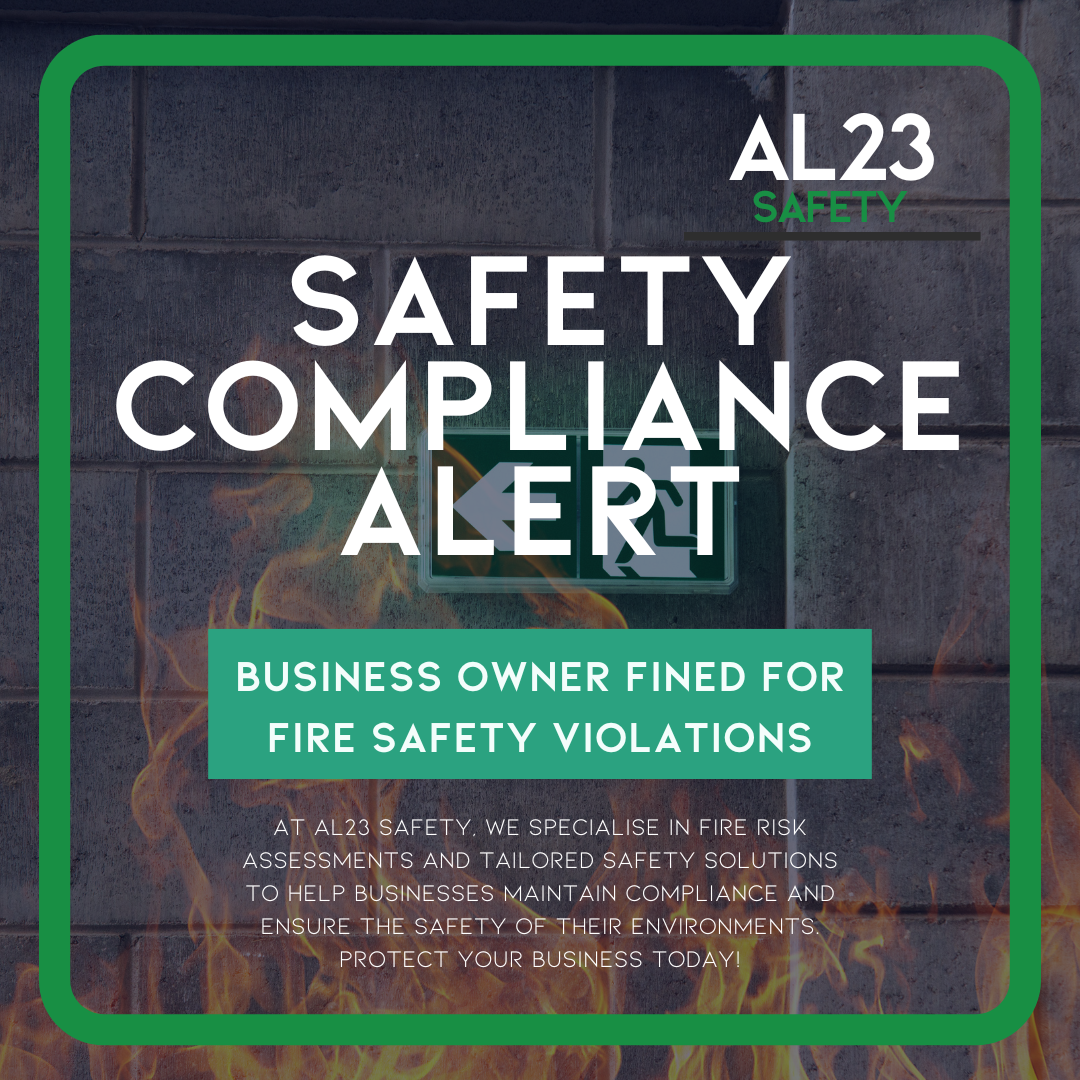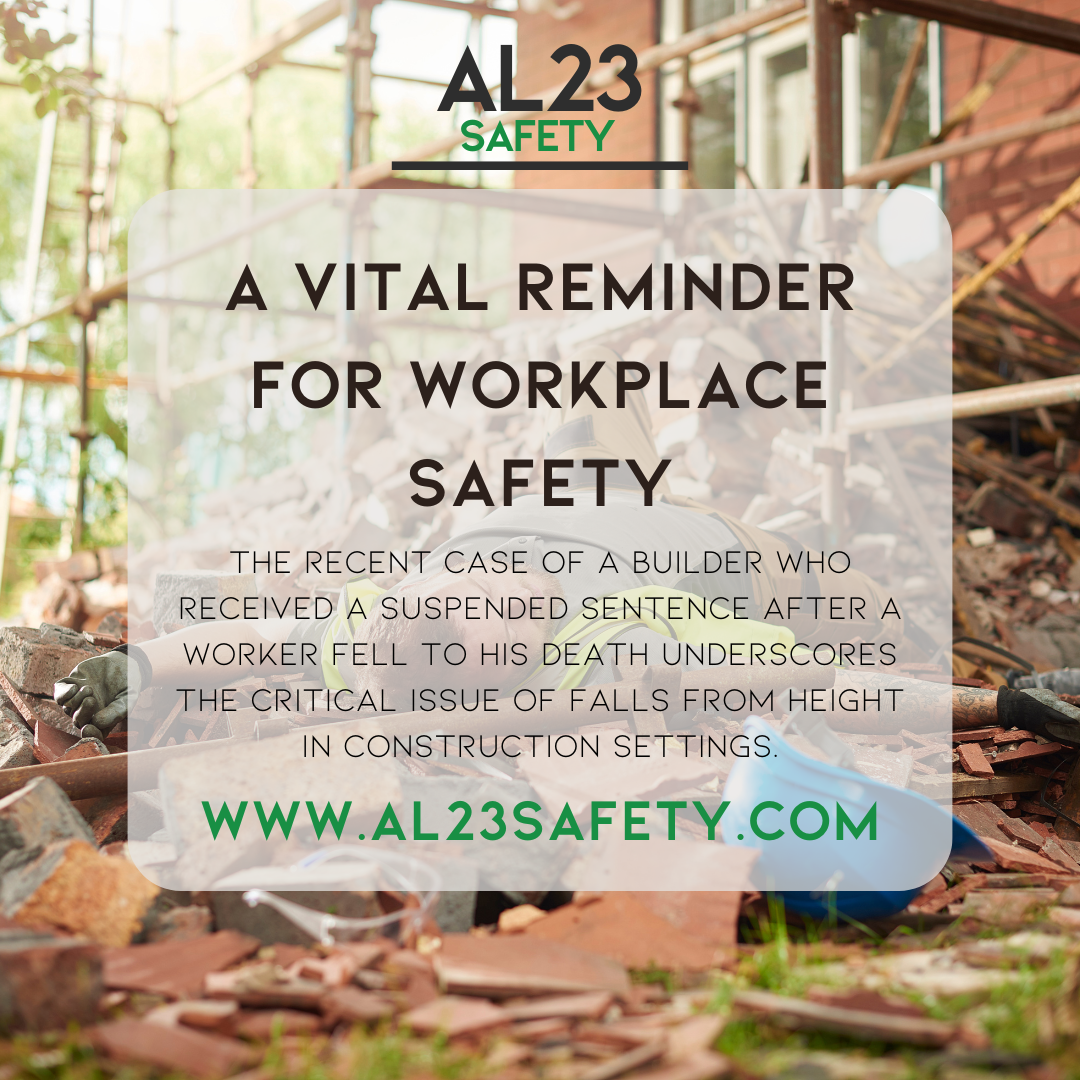Workplace safety equipment is the frontline defence in protecting employees from harm, yet neglecting it can lead to devastating consequences. In a shocking incident at a Motherwell rendering plant, a 23-year-old worker suffered permanent scarring from severe steam burns caused by a faulty steam hose, resulting in a £100,000 fine for Dundas Chemical Company (Mosspark) Limited. The Health and Safety Executive (HSE) investigation uncovered a “catalogue of failures,” including an unsafe nozzle without a trigger mechanism, unmaintained valves leaking steam, and a complete absence of maintenance records. This preventable tragedy, which occurred during a routine night-shift cleaning task in a cherry picker, highlights the dire risks of overlooking workplace safety equipment maintenance.
At AL23 Safety, we specialise in helping businesses avoid such pitfalls by implementing robust systems that prioritise employee well-being and regulatory compliance. In this blog, we delve into five urgent lessons from this case, offering practical insights to safeguard your operations and prevent similar disasters. By focusing on proactive measures, you can transform workplace safety equipment from a compliance checkbox into a cornerstone of a thriving, responsible organisation.
Lesson 1: Conduct Thorough Risk Assessments for All Workplace Safety Equipment
The foundation of effective workplace safety equipment management begins with comprehensive risk assessments. In the Dundas case, the HSE found that the maintenance and engineering team lacked a basic understanding of the risks posed by the steam hose setup, such as uncontrolled steam flow from a faulty mixing valve. Supervisors were aware of steam leakage but failed to act, allowing hazards to escalate unchecked.
Under the Health and Safety at Work etc. Act 1974, employers must identify potential dangers associated with equipment like hoses, nozzles, and pressure systems. Start by mapping out all high-risk tools in your facility, particularly in chemical or industrial settings where steam, chemicals, or heavy machinery are involved. Evaluate factors such as wear and tear, operational pressures, and environmental exposures. For instance, steam hoses require checks for insulation integrity and valve functionality to prevent sudden bursts.
By integrating risk assessments into your routine, you not only mitigate immediate threats but also demonstrate due diligence, reducing the likelihood of HSE enforcement. AL23 Safety offers tailored risk assessment services that pinpoint vulnerabilities specific to your industry, ensuring your workplace safety equipment stands up to scrutiny.
Lesson 2: Implement Rigorous Maintenance Schedules to Sustain Workplace Safety Equipment
Maintaining safety equipment is not optional; it’s a legal imperative that directly averts accidents. The absence of any maintenance records for the steam hose, valve, or nozzle in the Motherwell incident was a glaring oversight, contributing to the hose spinning uncontrollably and scalding the worker. This “heavy and cumbersome” tool, used without proper upkeep, turned a simple cleaning task into a life-altering event.
Establish a structured maintenance regime using HSE’s PUWER (Provision and Use of Work Equipment Regulations 1998) guidelines, which mandate regular inspections, servicing, and replacements. For steam hoses, this might include daily visual checks, monthly pressure tests, and annual professional overhauls. Digital tracking tools can log inspections, flag due dates, and alert teams to non-compliance, fostering accountability across shifts.
In high-hazard environments like rendering plants, where animal waste processing generates sticky residues that clog equipment, proactive maintenance prevents build-up and failures. Businesses that neglect this face not just fines averaging £100,000 or more but also downtime, insurance hikes, and eroded trust. Partnering with AL23 Safety ensures your maintenance protocols are watertight, with audits that keep your workplace safety equipment in peak condition.
Lesson 3: Enforce Strict Safety Standards and Engineering Controls
Adhering to HSE safety compliance standards is crucial, yet the Dundas failure exposed a disconnect between awareness and action. The steam hose nozzle lacked a trigger mechanism, making it impossible for the operator to control flow at the point of use, a basic engineering control that could have halted the incident instantly.
To elevate your standards, retrofit equipment with fail-safes like automatic shut-off valves, ergonomic handles, and heat-resistant guards. Conduct compatibility audits to ensure all components align with manufacturer specs and industry benchmarks. In chemical operations, where steam systems are commonplace, integrating interlocks that disable power if anomalies are detected can be a game-changer.
Moreover, embed these controls into your safe systems of work (SSOW), documenting procedures for equipment setup, use, and shutdown. Regular compliance drills reinforce adherence, turning policy into practice. At AL23 Safety, our consultancy helps bridge this gap, customising engineering solutions that align with HSE expectations and your operational realities.
Lesson 4: Prioritise Comprehensive Training and Supervision for Equipment Users
Even the best workplace safety equipment is ineffective without skilled, vigilant users. The young worker in this case was left alone with the cumbersome hose after his colleague moved on, operating from an elevated cherry picker without immediate oversight, exacerbating the danger when the hose malfunctioned.
Invest in hands-on training programmes that cover equipment handling, hazard recognition, and emergency responses. For steam-related tools, sessions should simulate failures, teaching techniques like quick nozzle manipulation and access to deluge showers, as the worker instinctively did to mitigate his burns. Supervisors must receive advanced modules on risk monitoring, ensuring they investigate reports, like the known valve leak promptly.
Annual refreshers and competency assessments maintain proficiency, especially for night shifts where fatigue can amplify errors. This approach not only complies with HSE’s training mandates but cultivates a vigilant workforce. AL23 Safety’s bespoke training elevates your team’s expertise, reducing accident rates and boosting morale.
Lesson 5: Foster a Proactive Safety Culture to Drive Continuous Improvement
Ultimately, preventing equipment accidents requires a culture where safety is everyone’s priority. The Dundas incident stemmed from systemic lapses, including ignored warnings and inadequate risk knowledge, underscoring the need for open reporting channels and leadership buy-in.
Build this ethos through safety committees, anonymous feedback tools, and recognition for proactive behaviours. Integrate lessons from incidents like this into toolbox talks, emphasising how proper workplace safety equipment maintenance saved the worker from facial burns but couldn’t prevent scarring.
Regular HSE-aligned audits and third-party reviews keep your culture evolving. The financial toll £100,000 fine plus costs pales against human suffering, yet proactive firms see returns in lower absenteeism and higher productivity.
Why Partner with AL23 Safety for Your Equipment Safety Needs?
The ramifications of this £100k fine extend beyond finances: permanent injuries disrupt lives, while reputational damage lingers. By applying these lessons, businesses can avert such crises, ensuring HSE safety compliance and a resilient operation. AL23 Safety stands ready with end-to-end solutions from risk assessments and maintenance planning to training and cultural audits, tailored for chemical, manufacturing, and beyond.
Don’t let faulty workplace safety equipment become your cautionary tale. Contact us today for a free consultation and fortify your defences against tomorrow’s risks. Together, we create environments where safety empowers success.



